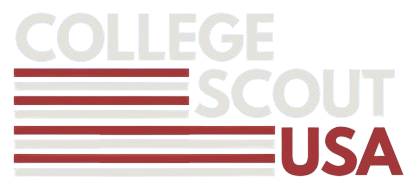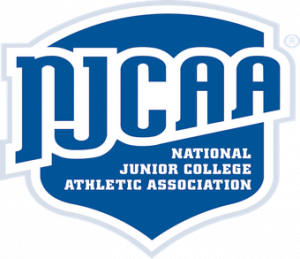Which US College Soccer Path is Right for You?
Breaking down the NCAA, NAIA, and NJCAA to help you understand your options.

NCAA? NAIA? NJCAA? D1? D2? Sun Conference? Big East?
If you’re unfamiliar with the US college soccer system, the terms alone can be overwhelming, but understanding the US college soccer divisions is essential for players aiming to compete and earn scholarships in America.
But understanding the different types of universities and the structure behind college soccer is essential for making informed decisions about your future as a student-athlete.
Let’s break it down.
Associations: The Big Picture
Every college with a soccer program falls under one of three main associations:
-
- NCAA (National Collegiate Athletic Association)
- NAIA (National Association of Intercollegiate Athletics)
- NJCAA (National Junior College Athletic Association)
The NCAA and NAIA represent four-year universities and colleges, while the NJCAA represents two-year community colleges or junior colleges.
Each has its own rules, competition structure, scholarship availability, and level of exposure. Choosing between them depends on your academic goals, playing ability, and what kind of experience you want as a student-athlete.
 NCAA: Prestige, Academics, and Exposure
NCAA: Prestige, Academics, and Exposure
The NCAA is the most well-known association. It’s split into three divisions:
Division 1 (D1): This is the top level of college soccer. D1 programs are often well-funded, have the most athletic scholarships, and offer high-level facilities and competition. Think big names like Stanford, Wake Forest, UCLA, and Georgetown. D1 schools expect a high level of athleticism, but they also have strict academic eligibility requirements. Balancing sport and academics at this level can be intense.
Division 2 (D2): The athletic level can be very close to D1, and many top D2 teams could compete with mid-level D1 programs. Schools like California State University–Los Angeles, University of Charleston, or Florida Tech regularly produce strong teams. D2 allows for a more balanced lifestyle, with slightly less academic and athletic pressure than D1.
Division 3 (D3): D3 colleges do not offer athletic scholarships. These schools tend to emphasize academics first, and soccer is more of a complement to the university experience. You’ll find highly competitive teams here too, such as Tufts University, Messiah University, and Amherst College, but it’s less suitable for those looking for a professional football pathway.
NAIA: Smaller Schools, Big Opportunities
The NAIA is often overlooked, but it offers excellent opportunities for international players. Many NAIA schools have competitive soccer programs, fewer academic restrictions, and more flexible recruitment rules. For example, University of Mobile, Mid-America Christian University, and Oklahoma Wesleyan are top NAIA programs.
NAIA schools are generally smaller, so you may benefit from smaller class sizes and a more personalized educational experience. NAIA coaches tend to be more flexible in offering scholarships and faster to make decisions during the recruitment process.
NJCAA: A Stepping Stone to the Top
The NJCAA covers community colleges and two-year institutions, which can be a great option for players who:
-
- Need more time to improve academically before transferring
- Want to prove themselves and earn a move to a top four-year college
- Need a more affordable entry point into US college soccer
Top NJCAA soccer programs include Arizona Western College, Eastern Florida State College, and Iowa Western Community College. These schools can be highly competitive and are regularly scouted by coaches from NCAA and NAIA programs.
Many players spend one or two years in NJCAA, then transfer with improved grades and on-field experience to D1 or NAIA schools with better scholarship offers.
So What’s the Difference in Player Quality?
This is the most important thing to understand: player ability doesn’t always align perfectly with division level. You’ll find:
-
- D1 starters who wouldn’t start at some NAIA or D2 programmes
- NAIA standouts who could easily play for D1 teams
- NJCAA athletes transferring to top 25 D1 programs after two years
The differences are more about academics, funding, and school size than pure talent.
For instance, NCAA D1 places more emphasis on academic performance, both for eligibility and during your studies. You must maintain a solid GPA and SAT/ACT scores to get in and stay eligible. NAIA and NJCAA are typically more relaxed in these areas, focusing more on your sporting contribution.
Choosing What’s Best for You
If your dream is to play at the highest level and compete in the NCAA D1 national tournament, you’ll need to balance academic excellence, elite-level play, and full commitment.
If you want more flexibility and a better chance at scholarships, NAIA is worth strong consideration.
If you’re developing late or want to build a stepping stone into US soccer, NJCAA might be the smartest starting point.
No matter the path, the US college system offers quality football, education, and life-changing experiences – if you find the right fit for you.
If you’re ready to explore your options and get personalised support, start your application to discuss working with us, and work with us today start your US soccer scholarship journey today.



![US College Soccer Scholarship Costs Explained [2025 Full Guide]](https://collegescoutusa.co.uk/wp-content/uploads/2025/07/NAIA-Soccer-Explained-Divisions-Scholarships-and-Why-Its-a-Great-Option-for-International-Players9.png)